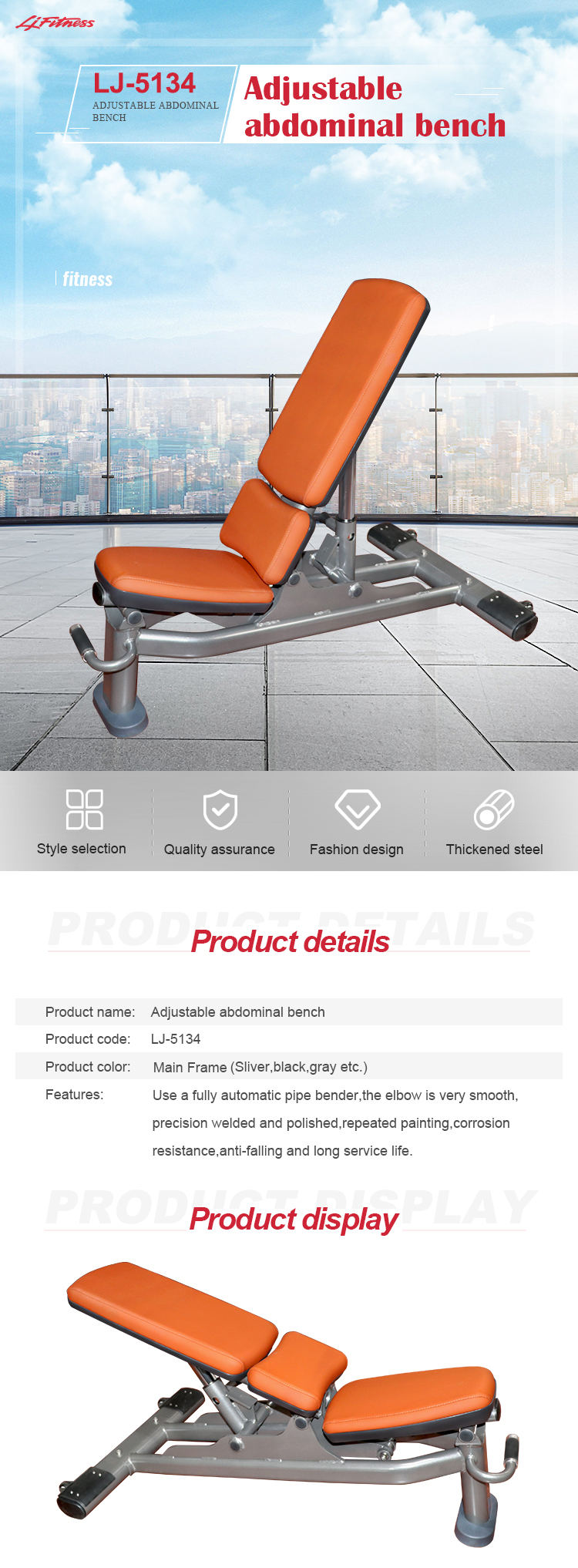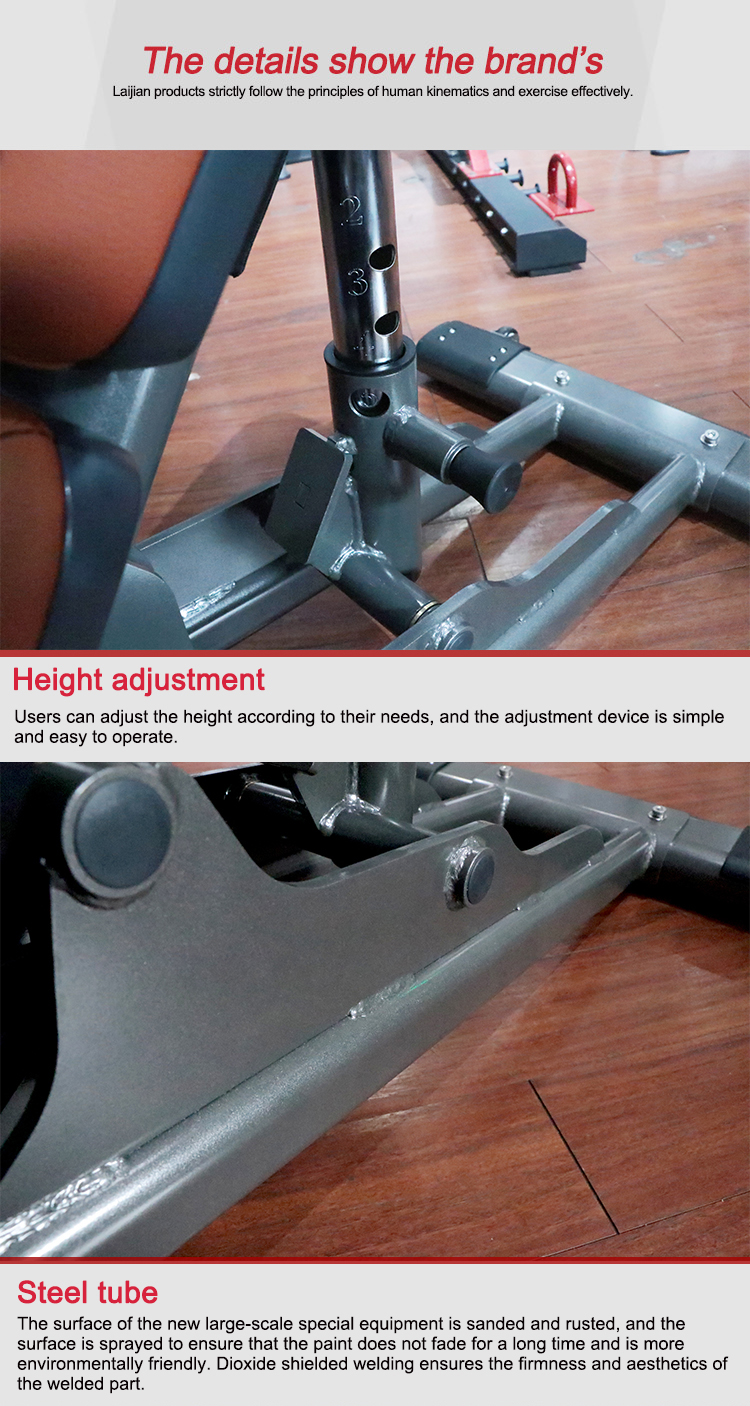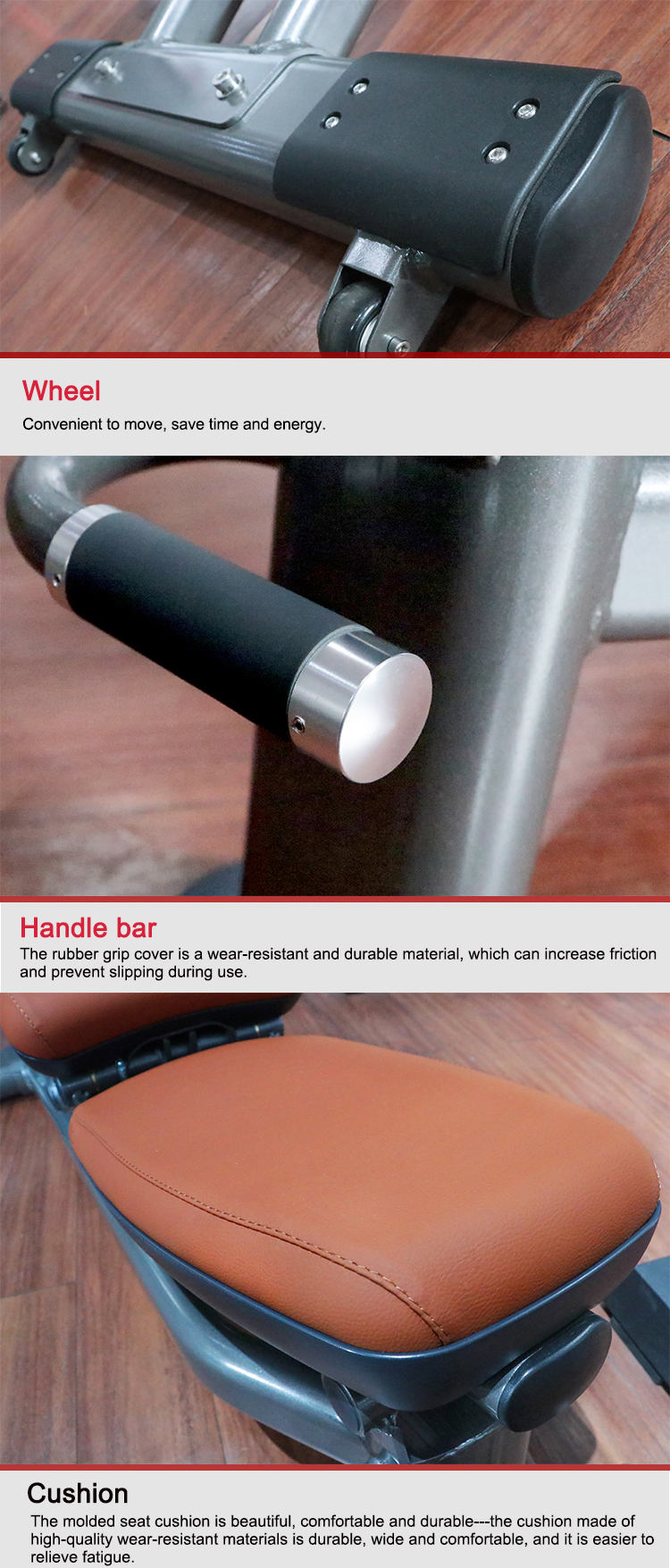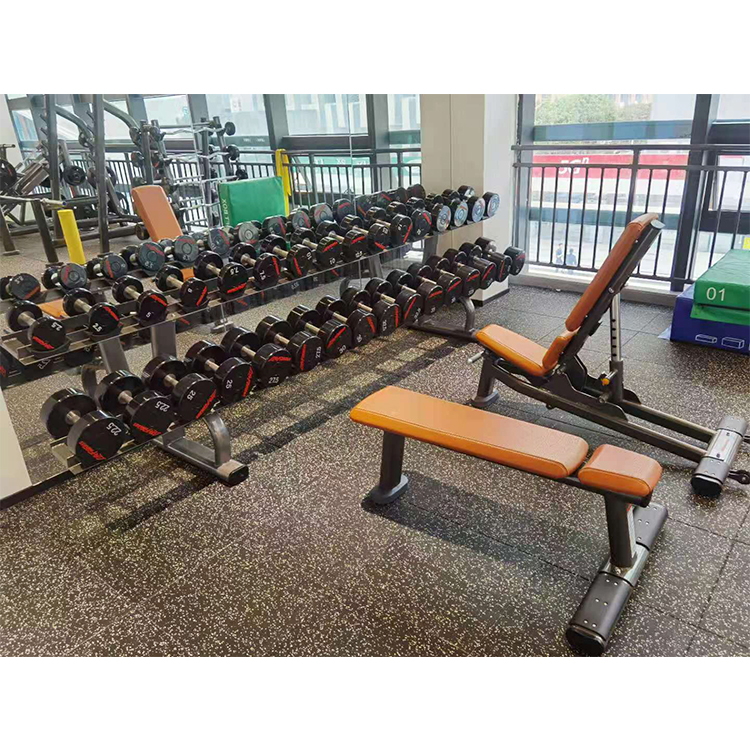An adjustable gym equipment dumbbell weight bench is a versatile piece of fitness equipment that allows users to perform a variety of exercises targeting different muscle groups. This type of weight bench typically features an adjustable backrest and seat, allowing users to change the angle of the bench to target specific muscle groups and accommodate different exercises.
The adjustable feature of the weight bench allows users to perform exercises such as dumbbell presses, incline presses, decline presses, shoulder presses, and more. By adjusting the angle of the bench, users can target different areas of the chest, shoulders, and triceps.
Additionally, some adjustable weight benches also come with attachments such as leg extensions and leg curls, allowing users to incorporate lower body exercises into their workout routine.
When selecting an adjustable gym equipment dumbbell weight bench, it is important to consider factors such as weight capacity, stability, and comfort. It is also advisable to choose a weight bench with a sturdy frame and high-quality upholstery to ensure durability and longevity.
Overall, an adjustable gym equipment dumbbell weight bench is a versatile and essential piece of equipment for anyone looking to build strength and muscle in the comfort of their own home gym.
What is the best weight bench for heavy people?
When selecting a weight bench for heavy individuals, it's important to consider factors such as durability, weight capacity, stability, and comfort. Here are some key features to look for in a weight bench that can support heavy users:
1. **Weight Capacity**: Choose a bench with a high weight capacity, ideally 800-1000 pounds or more, to accommodate the user's weight and the weights they plan to lift.
2. **Frame Construction**: Look for a solid, commercial-grade frame made of steel, which provides better strength and longevity. A welded frame is generally more durable than those bolted together.
3. **Pad Quality**: The bench should have thick, high-density padding on the seat and backrest to prevent wear and tear and ensure comfort during heavy lifting. Padded armrests are also a plus.
4. **Adjustability**: An adjustable bench with multiple positions (flat, incline, decline) allows for a wider range of exercises and better targeting of different muscle groups.
5. **Stability**: The base should have firm, non-slip feet or locking mechanisms to keep the bench stable during intense workouts.
6. **Non-Slip Surfaces**: Non-skid, textured surfaces on the feet and backrest will help prevent slipping, especially for those who sweat heavily.
7. **Ease of Assembly**: While not a primary concern for heavy users, a bench that's easy to assemble can save time and effort.
Some popular options for heavy people include:
- Marcy MB-370 Olympic Barbell Bench
- York Barbell 44-Inch Flat/Incline/Dip Weight Bench
- CAP Barbell Flat/Incline/Decline Weight Bench
- Rogue KB-3 Competition Series Weight Bench
- Body-Solid GFI-900 Commercial Grade Flat/Incline/Decline Bench
Remember to also check the dimensions to ensure the bench fits comfortably in your workout area and consult with a fitness professional or experienced user for specific recommendations based on your needs and preferences.Can you bench press on an adjustable bench?
Yes, you can bench press on an adjustable bench. Adjustable benches are designed to accommodate various exercises and fitness levels by allowing users to change the angle of the seat and/or the incline of the backrest. This versatility makes them suitable for exercises like bench press, where different angles may be used depending on your training goals, grip preference, or to target different muscle groups.
When using an adjustable bench for bench press, you would typically adjust the seat to a flat or slightly declined position, depending on your comfort level and the specific variation of the exercise you're performing (e.g., flat bench press for standard pressing or incline bench press for targeting the upper chest). Make sure the bench is stable and secure before lifting, and follow proper form and weightlifting techniques to ensure safety.How long do weight benches last?
The lifespan of a weight bench can vary depending on several factors, including the quality of construction, materials used, frequency of use, maintenance, and how well it is cared for. Here's a general overview:
1. Durability: A well-built weight bench with solid materials like heavy-duty steel frames and high-quality upholstery can last for 10 years or more with proper care.
2. Budget: Lower-priced options may have a shorter lifespan, typically around 5-7 years, as they may be made of lighter or cheaper materials that aren't as durable.
3. Usage: If you use your weight bench heavily for intense workouts, it may experience wear and tear faster, reducing its lifespan. Frequent use and abuse can shorten its life.
4. Maintenance: Regular cleaning, lubrication of moving parts, and preventing rust can help extend the bench's life. Proper storage when not in use can also protect it from damage.
5. Environmental factors: Exposure to moisture, extreme temperatures, or direct sunlight can cause corrosion and weaken materials, affecting the bench's longevity.
In summary, a high-quality weight bench can last for many years if taken care of properly. However, lower-end models might need to be replaced sooner. It's essential to invest in a sturdy bench that suits your needs and takes proper care of it to maximize its lifespan.What is the best width for a weight bench?
The best width for a weight bench can vary depending on personal preferences, workout goals, and body size. However, a standard width that is suitable for most people is around 48-56 inches (122-142 cm). This allows for comfortable foot placement during exercises like squats, bench presses, and military presses without feeling too cramped or too wide.
When considering the width:
1. Width for leg exercises: A wider bench (56 inches) provides better support for leg exercises like leg curls and extensions, as it allows for a full range of motion without leaning too far forward.
2. Width for upper body exercises: For bench presses and overhead presses, a slightly narrower width (48-52 inches) may be more comfortable, as it keeps your shoulders more stable and engaged.
3. Individual comfort: Some people may prefer a narrower bench if they have shorter arms or if they find a wider bench uncomfortable.
Ultimately, it's essential to choose a weight bench that suits your needs and allows you to maintain proper form during exercises. You can also consider adjustable benches, which offer multiple width settings to accommodate different exercises. If possible, try out a few options in person before making a purchase to ensure the best fit for your body.













